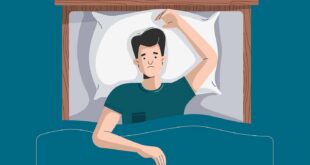Chronic Anxiety.
Chronic anxiety is characterized by constant, pervasive feelings of anxiousness and worry.
As discussed in the previous chapter, from a cognitive, physiologic, and behavioral standpoint, chronic anxiety may be conceptualized on a continuum with “normal” anxiety; it is distinguished from the anxiety most of us occasionally experience by its intensity and persistence.
In extreme form, chronic anxiety may meet the DSM-III-R diagnostic criteria for generalized
anxiety disorder.
The boundary between generalized anxiety disorder and panic disorder is somewhat arbitrary.
Generalized anxiety is often a feature of panic disorder, although some patients with panic disorder have all the symptoms of generalized anxiety; conversely, patients with generalized anxiety disorder are likely to have at least infrequent panic attacks, perhaps occurring with only one or two symptoms.
Patients with chronic anxiety score high on “neuroticism” on standard personality inventories.
The neuroticism factor includes anxious, depressive, and somatic symptoms, low self-esteem and low self-confidence, and irritability.
Among patients presenting with generalized anxiety disorder, “cognitive
aspects” of anxiety may dominate the clinical picture.
Patients report that they are frequently preoccupied, worried, or ruminative; their preoccupations often
concern events that are highly improbable.
For instance, a wealthy patient may worry that he will become a pauper; an excellent college student may worry that he will fail his classes.
When the content of the ruminations involves anticipated problems whose occurrence is more probable, the experience is more accurately described as anticipatory anxiety.
An example of the latter is the patient who worries about having a panic attack prior to entering a situation in which he previously experienced one.
Hibbert (1984) analyzed the subjective quality of the most important anxious thoughts for anxiety disorder patients with and without panic attacks.
When compared with those who did not suffer panic attacks, patients who did found their thoughts more clearly articulated, instrusive, credible, and difficult to exclude.
Most patients who had experienced panic attacks reported a physical feeling as the most frequent precipitant to episodes of anxiety, whereas patients in the generalized anxiety disorder group reported an anxious thought or a change in mood as the trigger.
These data suggest that generalized anxiety disorder patients may be less likely than patients with panic attacks to systematically misconstrue their somatic experiences as dangerous.
On the other hand, many studies show high levels of somatization in patients with anxiety disorders, although many of these studies have not specifically stated whether or not panic attacks were an important cofactor for greater somatization.
 Therapy for anxiety Therapy for anxiety
Therapy for anxiety Therapy for anxiety



